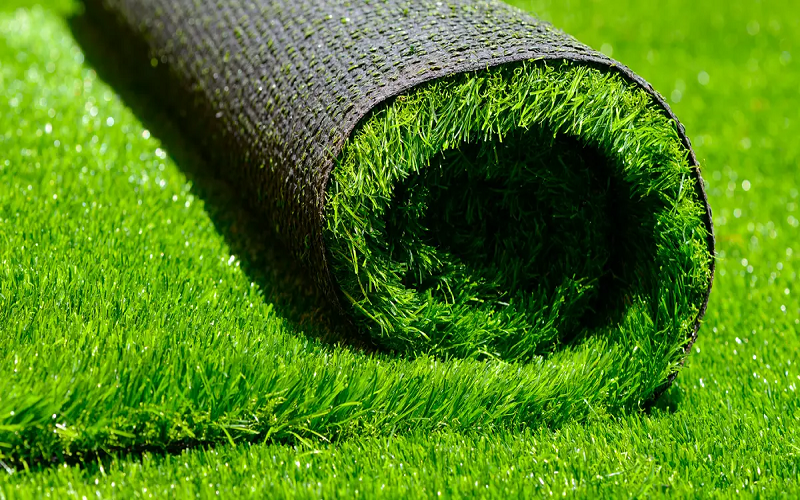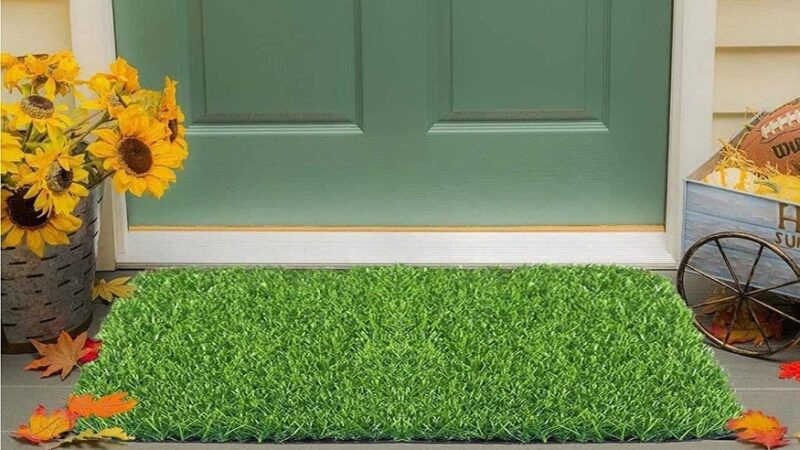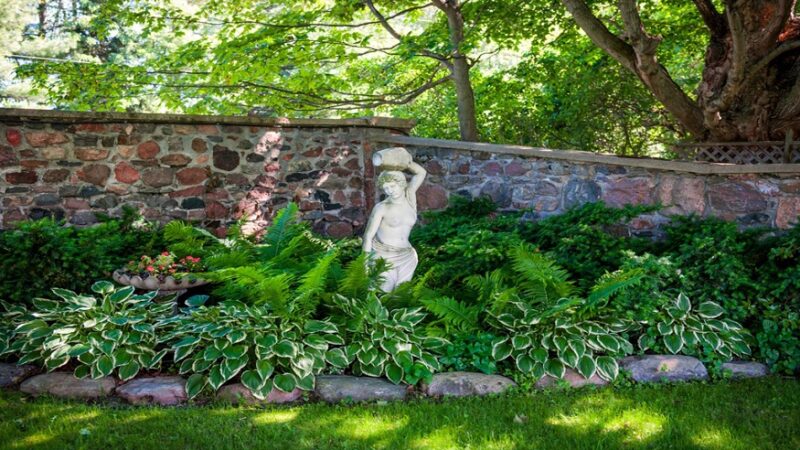How to Choose the Best Artificial Turf for Your Lawn

Are you tired of battling brown patches, weeds, and endless mowing? If so, it might be time to consider artificial turf for your lawn. With advancements in technology, today’s synthetic grass closely mimics the look and feel of real grass while offering a low-maintenance solution for homeowners.
Choosing the best artificial turf can transform your outdoor space into a lush oasis without the hassle. Let’s dive into everything you need to know about selecting the perfect turf that suits your lifestyle and preferences!
Understanding Artificial Turf
Artificial turf, often referred to as synthetic grass, is designed to replicate the appearance and feel of natural grass. It’s made from various types of materials, ensuring durability and versatility for different environments.
This innovative solution first gained popularity in sports arenas but has since found its way into residential lawns. Homeowners appreciate it for its aesthetic appeal and practical benefits.
One key aspect of artificial turf is that it’s engineered to withstand weather fluctuations without losing its charm. Whether facing scorching sun or heavy rain, quality turf maintains its vibrant color and texture over time.
Moreover, modern artificial grass incorporates advanced technology for a more realistic touch. Some varieties even include drainage systems that help manage water flow effectively. This means you can enjoy a beautiful lawn year-round without the fuss associated with traditional grass care.
Benefits of Using Artificial Turf on Your Lawn
Artificial turf offers a plethora of benefits that make it an appealing choice for homeowners. One significant advantage is the reduction in water consumption. With growing concerns over drought and water restrictions, synthetic grass provides a sustainable alternative.
Another notable perk is the low maintenance required. Forget about mowing, watering, or fertilizing your lawn regularly. This not only saves time but also cuts down on upkeep costs.
Additionally, artificial turf remains lush and green year-round. No more patchy brown spots or dead grass during dry seasons; it maintains its vibrant appearance regardless of weather conditions.
For families with pets or children, durability becomes crucial. Artificial turf can withstand heavy foot traffic without showing wear and tear, making it ideal for play areas.
Many options are designed to be eco-friendly and free from harmful chemicals—promoting a healthier environment for both your family and local wildlife.
Types of Artificial Turf: Nylon, Polyethylene, and Polypropylene
When diving into the world of artificial turf, it’s essential to understand the materials that make it up. Each type offers distinct characteristics suited for different needs.
Nylon turf is known for its exceptional durability. It withstands heavy foot traffic and extreme weather conditions, making it ideal for sports fields or high-use areas. However, this strength comes at a cost—it can be pricier than other options.
Polyethylene is popular among homeowners due to its soft texture and vibrant appearance. Its realistic look mimics natural grass remarkably well, providing an inviting space for family gatherings or backyard activities.
On the other hand, polypropylene tends to be more budget-friendly but isn’t as durable as nylon or polyethylene. It’s commonly used in lower-traffic areas such as decorative lawns or temporary setups. Understanding these types will help you select what aligns best with your lifestyle and preferences.
Factors to Consider When Choosing Artificial Turf
When selecting artificial turf for your lawn, durability is crucial. Look for materials that can withstand heavy foot traffic and harsh weather conditions. The longer the turf lasts, the more value you’ll get from your investment.
Next, consider appearance. Choose a color and texture that mimics natural grass to enhance your yard’s aesthetic appeal. High-quality turfs often showcase varied blade heights to create a realistic look.
Maintenance requirements also play a vital role in decision-making. Some products need regular brushing or occasional rinsing to stay clean, while others are more low-maintenance.
Cost is another factor not to overlook. Prices vary widely based on quality and brand reputation. Finding a balance between affordability and performance ensures you make an informed choice without sacrificing quality.
– Durability
When considering how to choose the best artificial turf for your lawn, durability is crucial. A resilient product can withstand heavy foot traffic, harsh weather, and UV exposure without fading or deteriorating.
Look for materials that are designed to resist wear and tear. High-quality fibers like nylon typically offer superior strength compared to other options. They hold up well under pressure and maintain their shape over time.
Additionally, check for warranties. Reputable manufacturers often back their products with guarantees that speak volumes about durability expectations.
Remember that a long-lasting turf will save you money in the long run by reducing replacement costs and maintenance needs. Choosing wisely now means enjoying a lush green lawn for years ahead without constant worry about upkeep or damage.
– Appearance
When selecting artificial turf, appearance plays a significant role. The look of your lawn can greatly influence curb appeal and overall satisfaction.
Consider the shade of green that suits your style best. Some prefer vibrant hues, while others opt for more natural tones. A realistic appearance often comes from a blend of colors in the fibers.
Texture is another crucial aspect. Look for grass that mimics the feel of real grass, providing both visual appeal and comfort underfoot.
Height matters too; longer blades can convey a lush landscape while shorter options might suit modern designs better. Pay attention to blade shape as well—curved or flat options can create different aesthetics.
Consider how the turf will look throughout changing seasons. Quality products maintain their color and texture over time, ensuring your lawn remains inviting year-round without fading or looking worn out.
– Maintenance
Maintenance is a key factor when selecting artificial turf. Unlike natural grass, which requires regular mowing and watering, synthetic lawns need far less upkeep. However, they aren’t entirely maintenance-free.
Routine brushing helps keep the blades upright and looking lush. This simple task can prevent matting and ensure even wear over time. Additionally, occasional rinsing with water removes dust and debris that may accumulate on the surface.
You’ll also want to check for any weeds or debris poking through the seams or edges. A quick inspection every few weeks will help maintain its pristine appearance.
If you have pets, consider how their activities might impact your turf’s condition. Regular cleaning can eliminate odors and keep your lawn fresh. With proper care, your artificial turf can remain vibrant for years to come.
– Cost
When considering artificial turf, cost is a pivotal factor. The price can vary significantly based on material quality and brand reputation.
Nylon tends to be the most expensive option due to its durability and resilience. If you want something more budget-friendly, polyethylene is often favored for residential use. It strikes a balance between affordability and quality.
Don’t forget about installation costs as well. Hiring professionals ensures proper setup but adds to your total investment. DIY installation might save money, yet requires time and effort.
Additionally, look at long-term expenses like maintenance or replacement needs down the line. A cheaper upfront option may not always be economical in the long run if it wears out quickly or requires frequent repairs.
By weighing these factors carefully, you’ll get a clearer picture of what fits your budget without compromising quality.
Tips for Installing Artificial Turf
Installing artificial turf can seem daunting, but with a little preparation, it becomes manageable. Start by measuring your lawn area accurately to determine how much turf you need.
Next, clear the installation site of any debris, rocks, and existing grass. A smooth surface sets the foundation for a great finish.
Consider adding a weed barrier fabric underneath to prevent unwanted growth from disturbing your new lawn. This step saves time in maintenance later.
When laying down the turf rolls, ensure they are aligned correctly for a natural look. Use nails or staples around the edges to secure them firmly in place.
Infill material helps keep the blades upright while improving drainage. Choose quality infill that suits your needs best; this will enhance both appearance and longevity of your artificial grass installation.
Conclusion
Choosing the best artificial turf for your lawn is a significant decision. It requires careful consideration of various factors, including durability, appearance, maintenance needs, and cost. By understanding the different types of artificial turf available—nylon, polyethylene, and polypropylene—you can make an informed choice that suits your specific requirements.
With all this information at hand, you’re now equipped to select artificial turf that not only enhances your outdoor space but also fits seamlessly into your lifestyle. Embracing synthetic grass might just be one of the best decisions you make for a beautiful and low-maintenance lawn.






